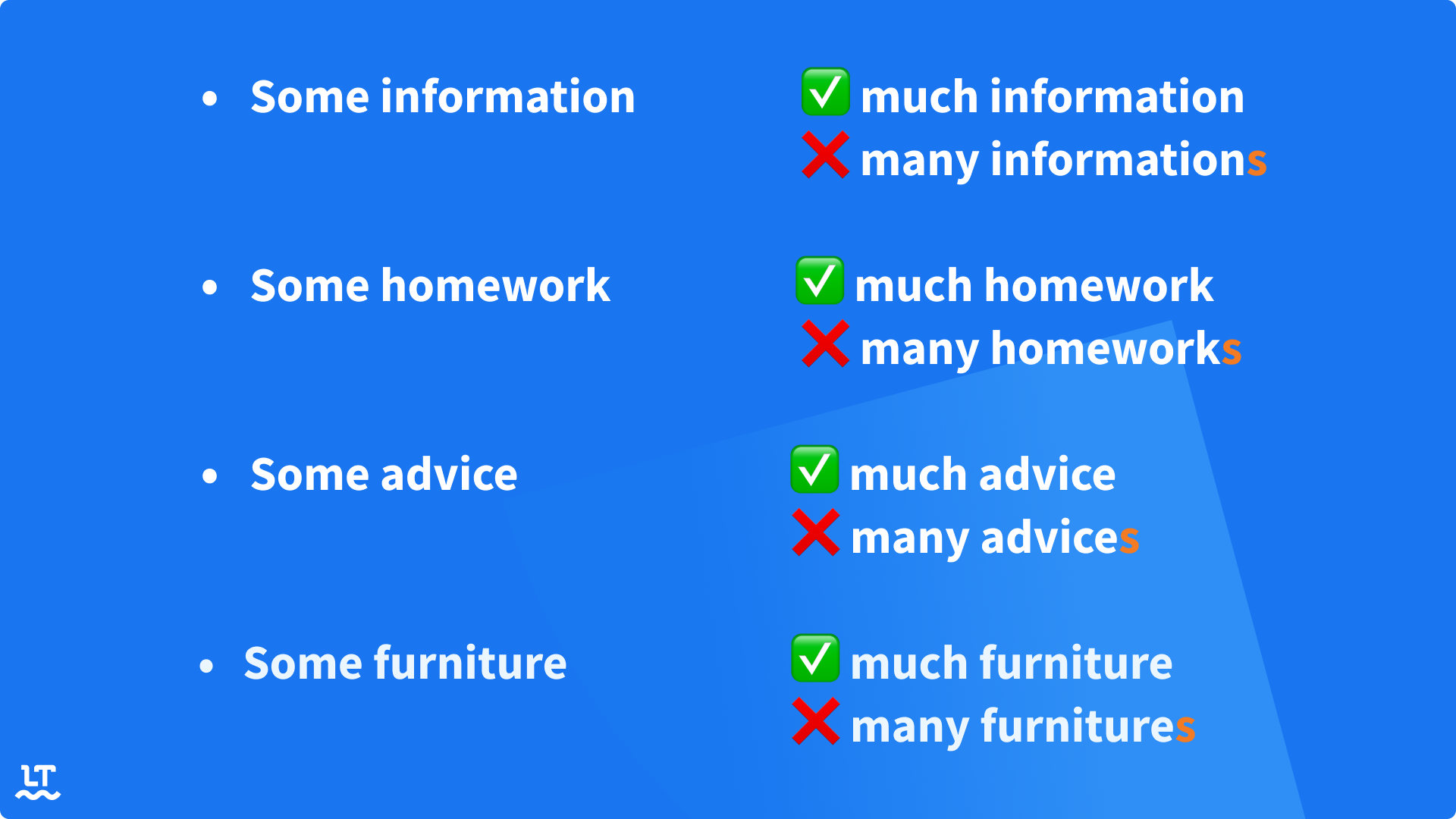Learning to Use Many or Much
The difference between many and much is that many is used for countable and plural nouns, whereas much is used for uncountable and singular nouns.
There are many solutions to the problem
She accidentally added too much milk the recipe
“Many” vs. “Much”
Many and much can both function as determiners to specify the quantity of a noun. The confusion arises because they quantify different types of nouns. However, like fewer and less, there is a simple rule to follow that can help you use these words correctly: Use many for countable or plural nouns, and use much for uncountable or singular nouns. We’ll elaborate below.
When To Use “Many”
Many can function as a determiner or adjective that refers to “a large number of something”. Regardless of its function, many is used with countable or plural nouns.
In the examples above, the nouns (underlined) are all plural nouns and can be counted.
Technically, many can also function as a pronoun and as a noun (although not as common). As a noun, it refers to “the majority of people.”
(Pronoun)
(Noun)
When To Use “Much”
Similarly, much can also function as a determiner, adjective, or pronoun that means “great in quantity or amount.”
Here, the nouns are uncountable and singular. Yes, technically you can count money, but the only way to use many with money is if you specify the amount or currency. For example:
Much can also function as an adverb that means “to a great degree or extent.”
Here’s a visual that’ll help you remember when to use many or much.
There’s Not Much More to It
There are nouns that can be both countable and uncountable, depending on the context of the sentence. Consider the following examples:
- Use many for plural nouns.
- Use much for singular nouns.
Remember these rules, and you’ll always use many and much correctly. However, if you need a bit of assistance, LanguageTool can help by detecting the incorrect use of many and much. It can also do many more things, like check for spelling and grammar errors and suggest stylistic improvements.

